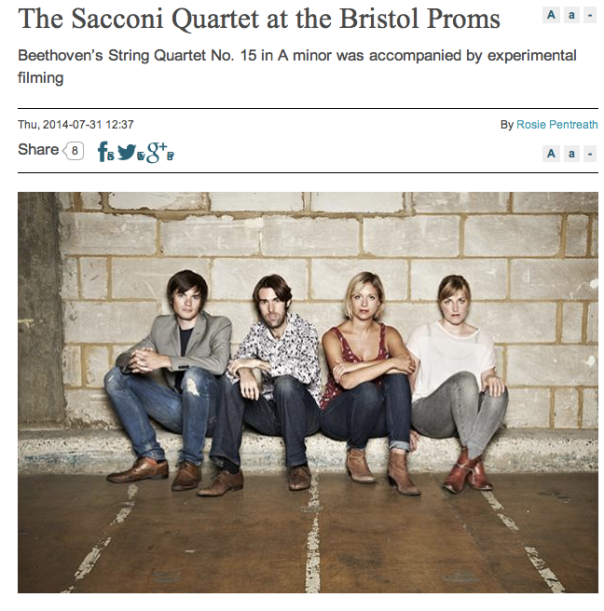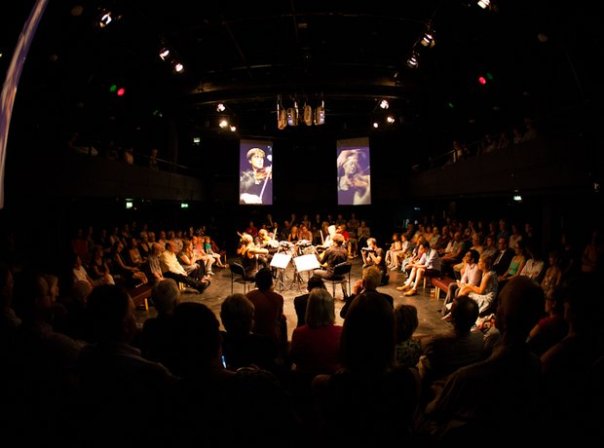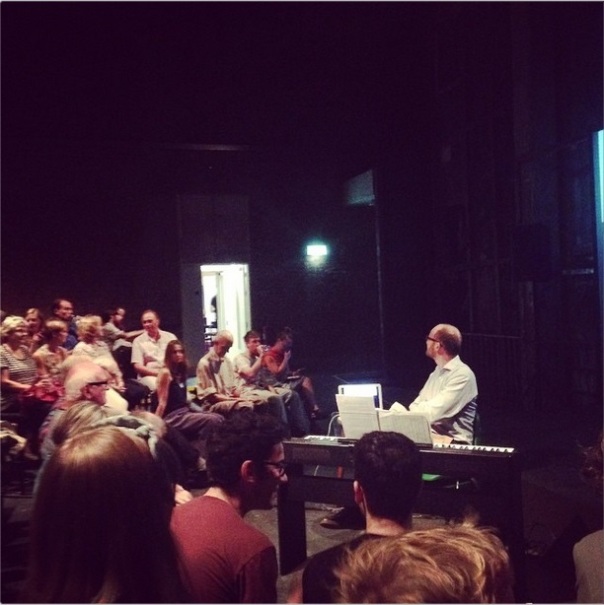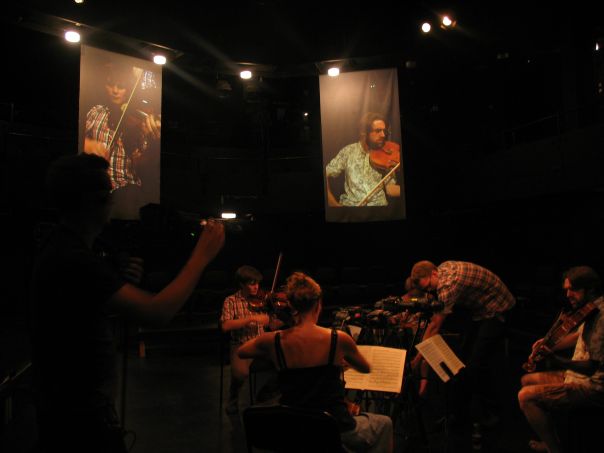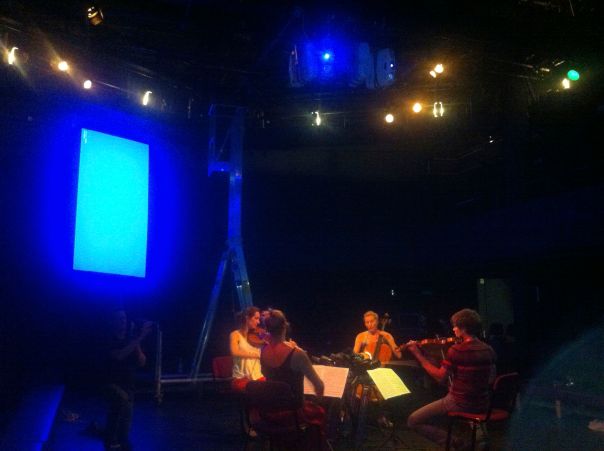Looking back on the experience, I am delighted with what we achieved in such a short time. It was a privilege to work with such wonderful musicians, Jonathan James was a delight, as was everyone at the Old Vic, and my partners on the film and vj-ing front did really well. By the end of it we had quite a team from UWE and beyond: Michael Sides, James Gates, Sean Gulliford, Rob Jewitt, Joe Haines, Jack Offard, Rob Gordon and Gustavo Barbaroso. Thanks to all. I hope we can work together again and experiment some more. In terms of how to judge it’s success, my view is that it was never going to be to everyone’s taste, given the already intimate nature of the space and intensity of the music itself. My judgement is also that for those already sitting up close and personal to the musicians, the visuals were on balance a distraction. I feel that this issue of seating and placement of screens would need further thought in any future experiments.
The review from classical-fm.com
However, for those like me standing or sitting even a short distance away, I feel that the visuals did help to increase the intensity of the performance for those who were willing to go with them even if they were not essential to its integrity. I also wondered at one point whether we needed the roving cameras at all and was aware that the physical size and presence of the cameras was quite imposing. I did, however, appreciate the layering of imagery that we achieved and wonder how it would have felt with less intrusive technology. I would also have loved to work with a professional lighting designer to further experiment with immersive effects. Overall, I am confident that what we achieved, as a unified approach across Jonathan James’ talk and the performance itself, did move people and offer new ways into Beethoven’s music. I also hope that it has helped to bring new audiences to the Sacconi Quartet’s wider repertoire. Thank you to Universal Music and the Bristol Old Vic for enabling it to happen.
